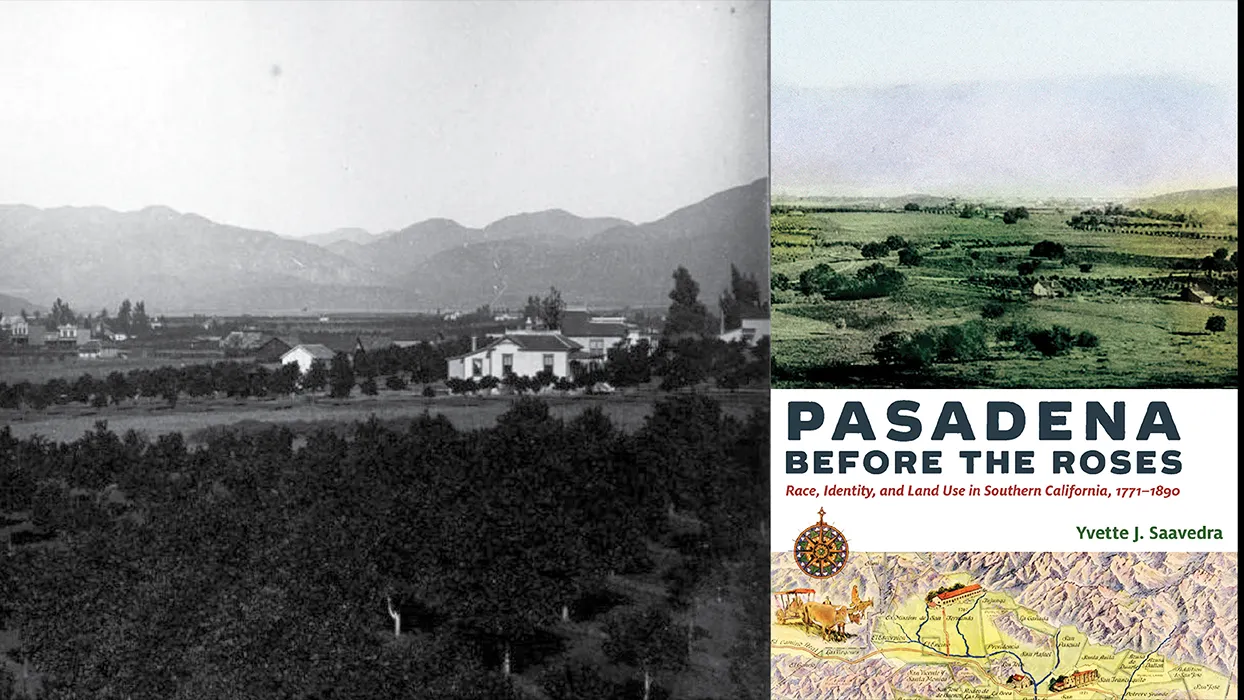Joe Gutierrez Office of Strategic Communication (909) 537-5007 joeg@csusb.edu

Before the Tournament of Roses parade and its football game – indeed, long before Old Town Pasadena became a destination for tourists and locals alike – the land that became the city of Pasadena was already being formed in various ways by its early residents. “Pasadena Before the Roses: Race, Identity, and Land Use in Southern California, 1771-1890,” a newly published book by Yvette Saavedra, a Cal State San Bernardino assistant professor of history, takes a detailed look at the city’s past beginning with the arrival of the Spanish and establishment of the San Gabriel Mission. On Nov. 15, Vroman’s Bookstore in Pasadena hosted a presentation and book-signing for Saavedra, which was well-attended. Attendees commented on the importance of sharing this history for the region. Lamin Whittaker, from Highland Park, said this work “opened up readers to the complexities involved when people try to preserve and protect their culture in the midst of conquest and land acquisition.” Saavedra’s book is described as a social and cultural history detailing how Spanish, Mexican, American and Indigenous groups’ competing visions of land use affected the formation of racial and cultural identity in Pasadena. This work is an effort of historical recuperation. It highlights a little-known history of the region and its people. It examines how Tongva, Californio and early American homesteaders negotiated and contested power as a means to building the world around them. “Saavedra examines a period of 120 years to illustrate the interconnectedness of power, ideas of land use, and the negotiation of identity within multiple colonial moments,” it says on the webpage for the book, published by the University of Arizona Press. “By centering the San Gabriel Mission lands as the region’s economic, social, and cultural foundation, she shows how Indigenous, Spanish, Mexican, and American groups each have redefined the meanings of land use to build their homes and their lives. These visions have resulted in competing colonialisms that framed the racial, ethnic, gender, and class hierarchies of their respective societies.” Wrote Stephen Pitti, a professor of history at Yale University, in a review, “Yvette J. Saavedra shows how issues of race and class and gender made and remade local society in Southern California, and how power and politics shaped this region across the long nineteenth century.” Marne L. Campbell, an associate professor of African American Studies at Loyola Marymount University, complimented Saavedra’s research. “‘Pasadena Before the Roses’ complicates how we understand the early Los Angeles area,” Campbell wrote. “Using an intersectional lens, Saavedra has tapped into a wealth of primary sources to conduct this research and, in doing so, has joined the ranks of some of the best Chicana historians.” More information on “Pasadena Before the Roses” can be found at its website and on the CSUSB history department’s Featured Publications webpage.